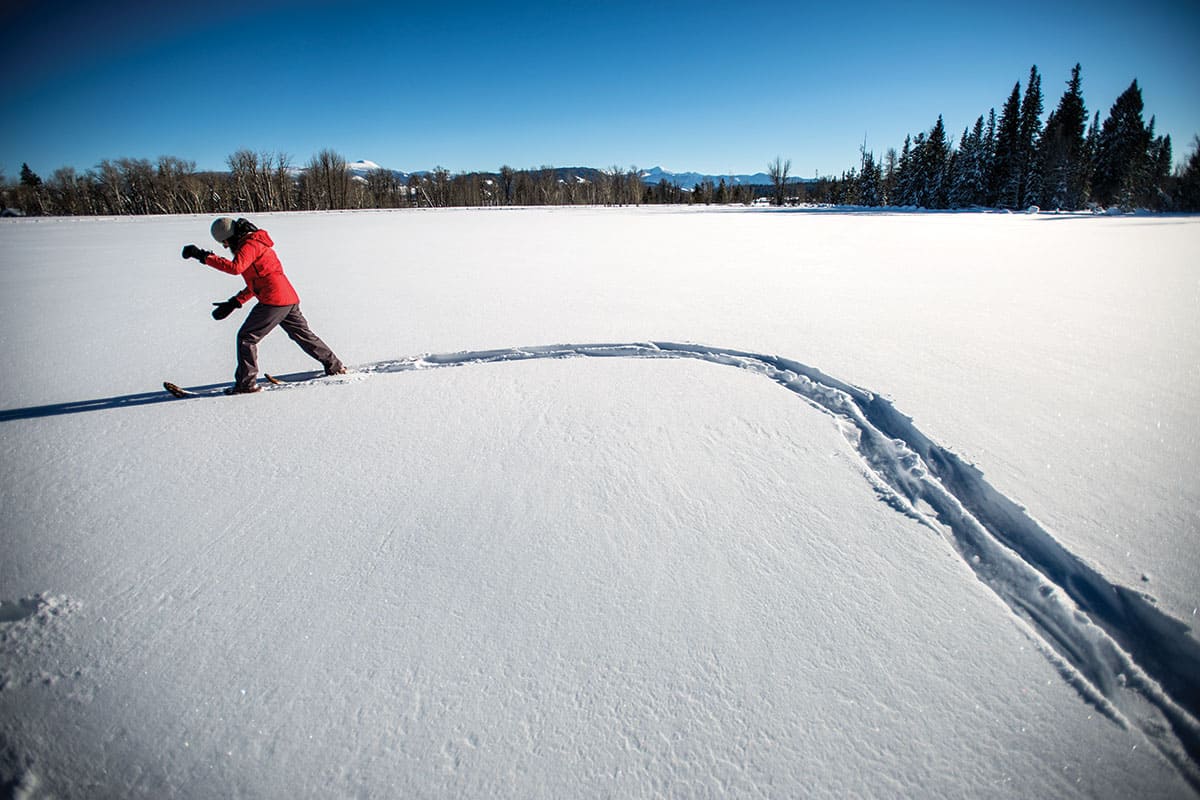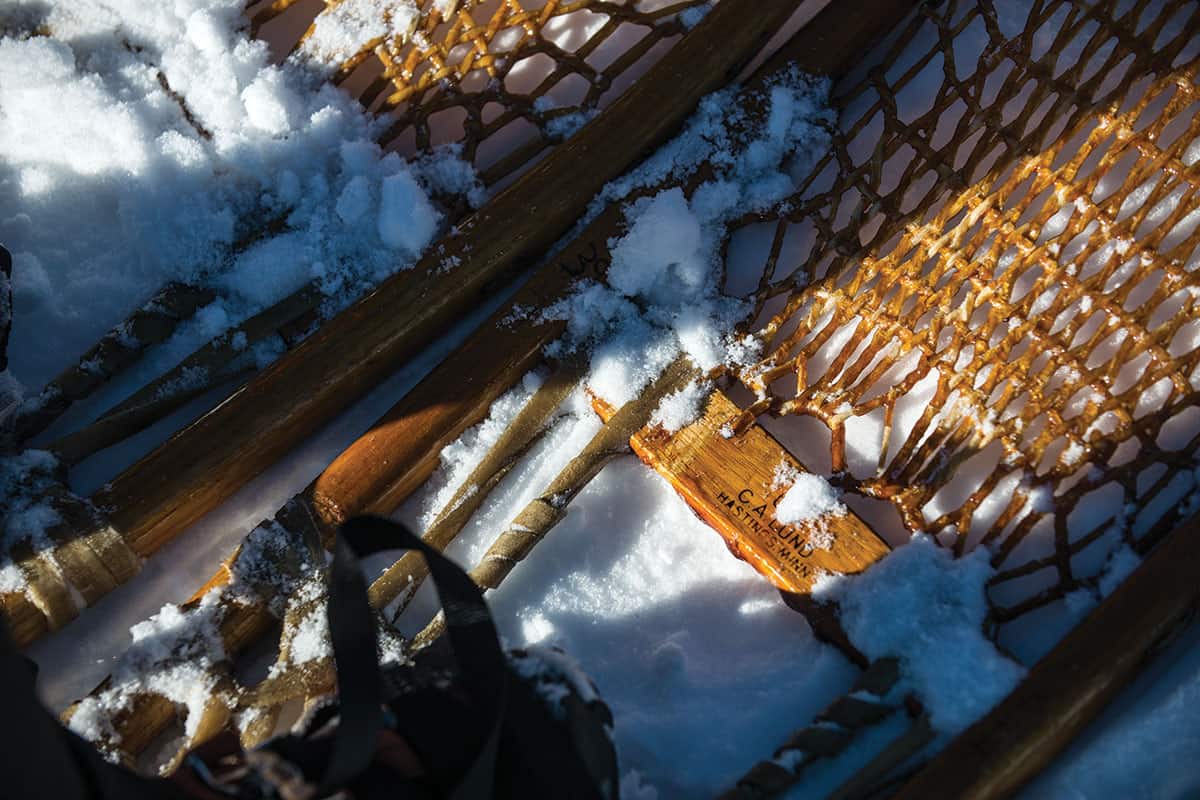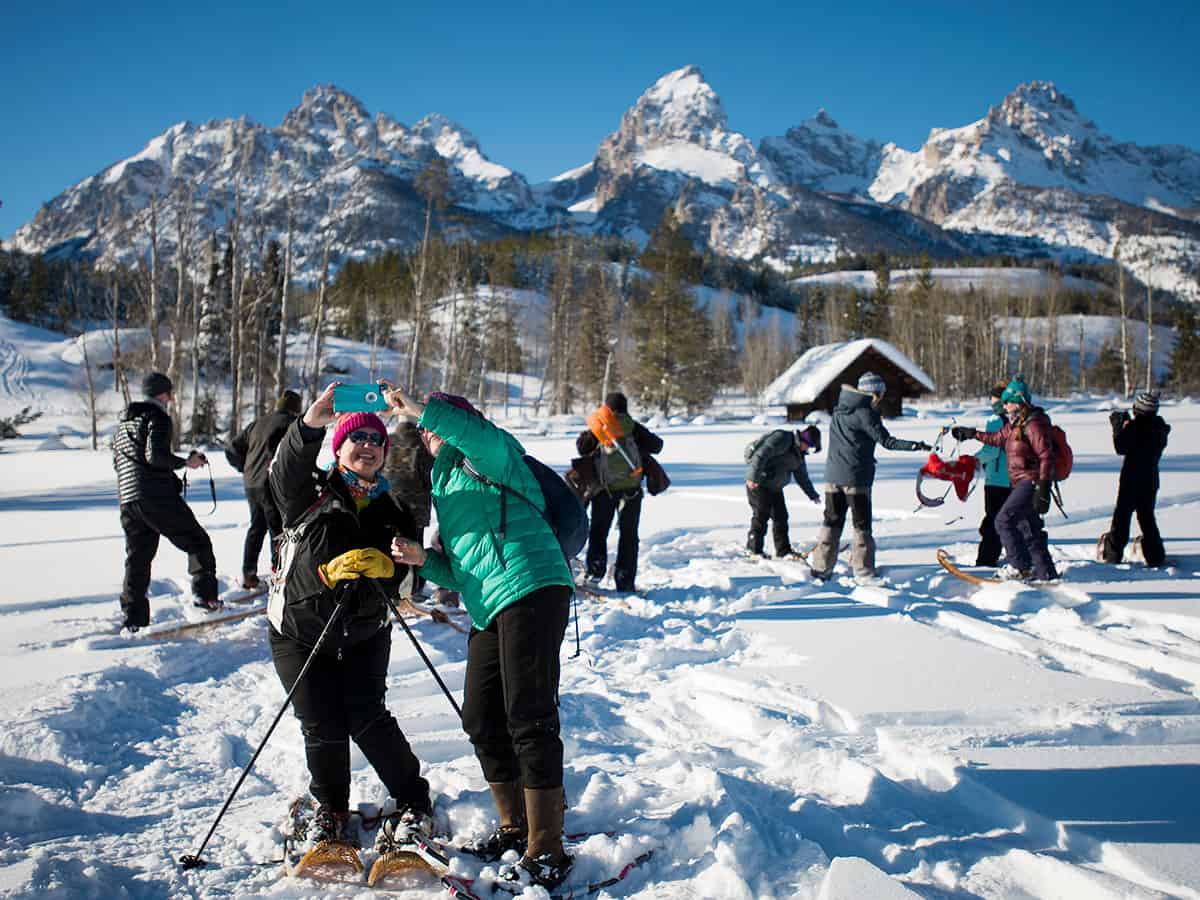Read The
Current Issue
Take a Walk on the Wild Side
No experience is necessary to go snowshoeing, and there are free ranger-guided snowshoe treks in Grand Teton National Park.
By maggie domowitz • Photography by bradly j. boner

FOUR COLLEGE FRIENDS visited me here in the middle of my second winter. Since these friends were important to me, and because Jackson had also become very important to me, I wanted the former to get a sense of the latter. I loved Jackson Hole for many reasons, and I decided the most easily experienced of these was Grand Teton National Park (GTNP). But I didn’t want to merely drive the few roads in the park that are open in the winter—I wanted to get my college friends into the park’s wilds. I was in Jackson Hole for all of two weeks when I realized that, as astonishingly beautiful as the Tetons were from afar, they were utterly magical when you took the time and energy to get into them, even if only for a couple of hours and miles.
I didn’t make it easy on my friends, though. While snowshoeing is generally believed to be the simplest way to explore snowy landscapes, at the time I was avidly antisnowshoe. (I can’t remember why, but perhaps it was because snowshoeing doesn’t take any specialized skill, and I was spending so much time and energy learning how to ski without making much progress.)
Equal to my disdain for snowshoes was my cluelessness about travel in or over snow. I thought we could just hike up the summer trail from the Granite Canyon parking lot at the south end of the Moose-Wilson Road. I knew there would be snow on the trail, but thought it’d simply be a minor inconvenience. It turned out I was majorly mistaken.
Within five minutes of setting out from the car we sunk into the snowpack with each step. And we sunk in deep. On a good step, we’d sink in only to our knees. A bad step would capture us crotch-deep and make it impossible to extricate ourselves without assistance from the rest of the group. Still, I didn’t admit my plan was a poor one and allow us to return to the car until all five of us got trapped in a thigh-deep hole of our own making.
Tony took a bad step first. Amy went to his aid, and ended up stuck herself. The same thing happened to Jer, and then Alison, and, finally, me. While it took less than five minutes to get into this predicament, it took more than twenty minutes to get out of it. When we got back to the car, we were all soaked, cold, and tired.
DEFEATED, I WAS ready to consider other options, even snowshoeing. A local friend mentioning that Grand Teton National Park rangers did free guided snowshoe tours, snowshoes included, sealed the deal. I made reservations for us for the next day.
As antisnowshoeing as I was, I certainly didn’t expect to be so taken with GTNP’s snowshoes themselves. Our tour group hadn’t even left the Bradley-Taggart Lakes parking lot and I was already proclaiming it one of the coolest experiences ever. The park’s snowshoe fleet, which includes about forty pairs, is not made up of normal snowshoes. GTNP’s snowshoes are older than the park itself (at least they’re older than the park as it exists today—the current boundaries were established in 1950). GTNP’s snowshoes were made for World War II soldiers; the oldest pair is from 1942.
While I marveled at the craftsmanship behind the rawhide laces running the length of the wood frame, our ranger/guide gave the group a short history lesson, no part of which (beyond WWII itself) had been touched upon in my AP U.S. History class.
During the war, the U.S. government commissioned four companies to make snowshoes for use by 10th Mountain Division soldiers: Lund, American Fork and Hoe Co., Snocraft, and Bentley-Wilson. GTNP has snowshoes made by three of these four. (Unrepresented in its collection is Bentley-Wilson.) Because the government had strict design specifications, it’s difficult to tell snowshoes from these manufacturers apart. But it’s not at all difficult to tell the snowshoes in this collection apart from other snowshoes. A couple of the members of our group of fourteen brought their own modern snowshoes. Next to the antique ones, they looked foolish and inelegant.
GTNP’s snowshoes are pieces of art. It is possible another national park has such a collection, but, if they do, it’s certain they don’t let visitors use them. These snowshoes are made of ash, the same wood Louisville Slugger traditionally used to make its baseball bats. Real rawhide is strung across the frame. The year each pair was manufactured is stamped on its tail. They are more than three feet long, but are narrow and have rockered tips. The ranger explained this shape makes them ideal for walking in powder, which was the next lesson.
Anyone who can walk can snowshoe, but, especially with snowshoes this big, you have to modify your walking. I doubled the usual distance between my feet and didn’t have any problems.
For the next two hours, we tromped around the open flats and pine forests near the parking lot. We learned about how local wildlife adapted to survive winter. We saw the tracks of red squirrels and coyotes. We stopped chattering, listened, and heard nothing but silence. Finally, we dug a snowpit. As we dug, the ranger, while starting to take his snowshoes off, asked if anyone had an idea of how deep the snow was. Before we could tell him that we had firsthand knowledge that it was very deep and that he could save himself the exertion of a demonstration, he stepped out of his snowshoes and into the snow. And everything below his waist disappeared. “Snowshoes are our way of adapting to move around on snow,” the ranger said. Five minutes later, when we arrived back at the car dry, warm, and invigorated, I was happy to have evolved.


Nuts & Bolts
The ranger-led snowshoe tours in Grand Teton National Park are held at 1:30 p.m. every Monday, Wednesday, and Saturday between mid-December and early March (the end of the season is weather-dependent). Tours start at the Bradley-Taggart Lakes trailhead, cover about one mile, and last for about two hours. Reservations are required and can be made by calling 307/739-3399. At the time you make a reservation, a ranger will talk to you about what to bring. These tours are free, but a $5 donation, which goes to the upkeep of the historic snowshoes, is suggested. Both the Bradley-Taggart Lakes trailhead and the Granite Canyon trailhead are great spots to go snowshoeing on your own if you can’t do a ranger-guided tour. nps.gov/grte




